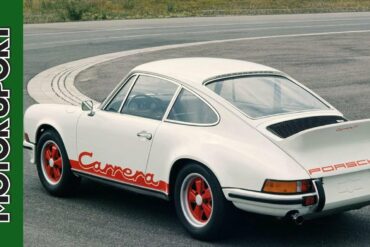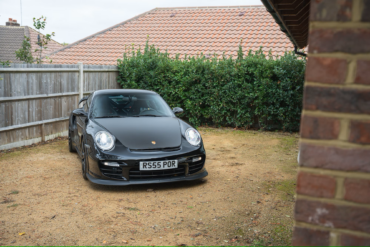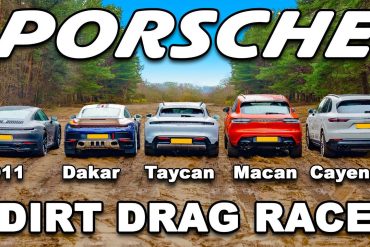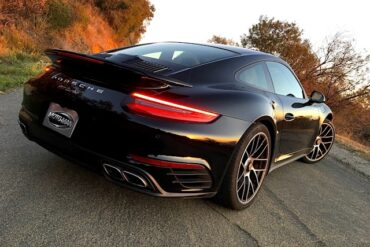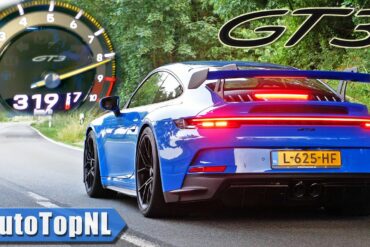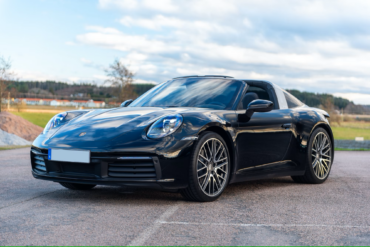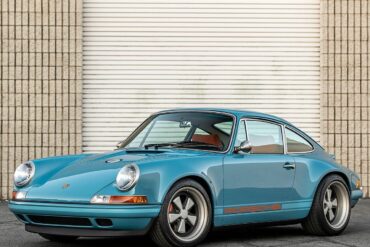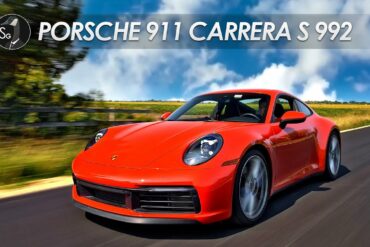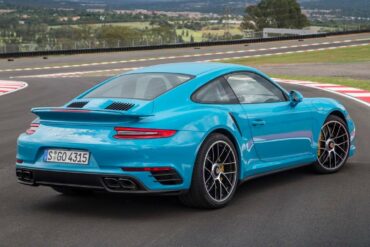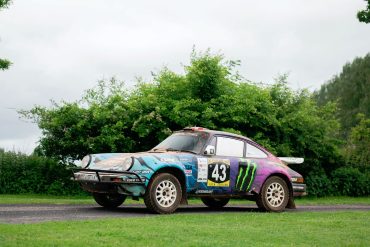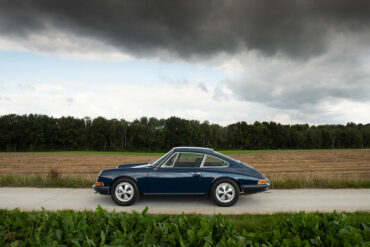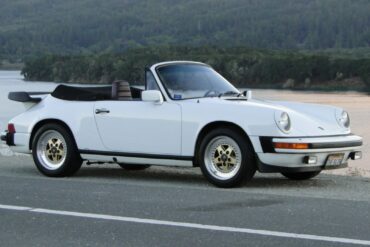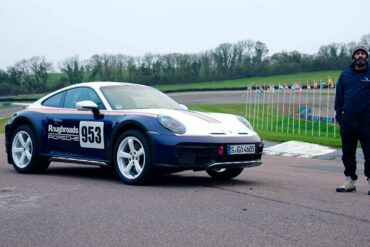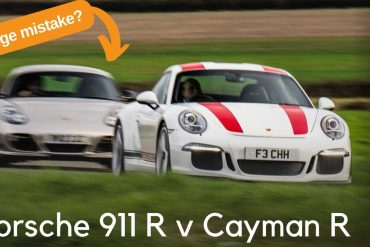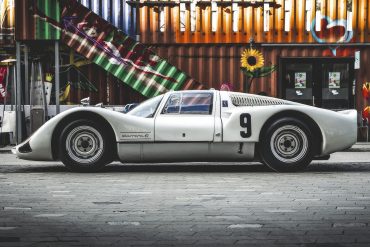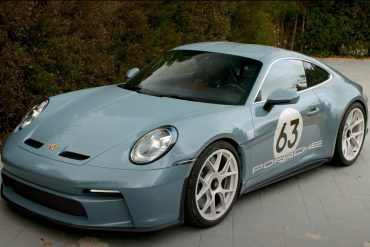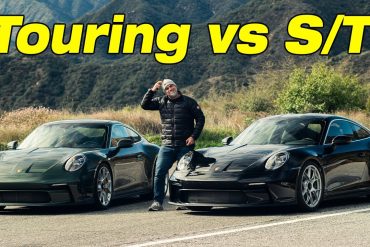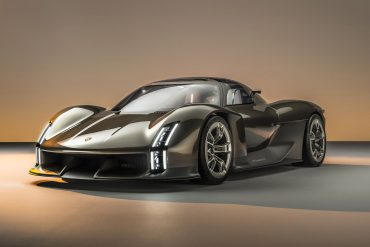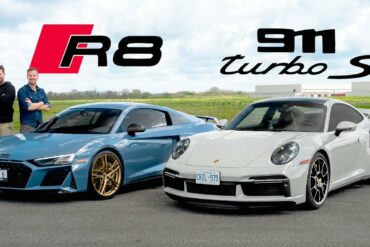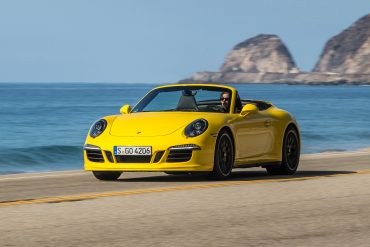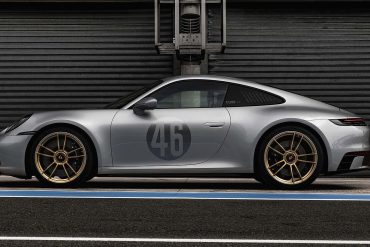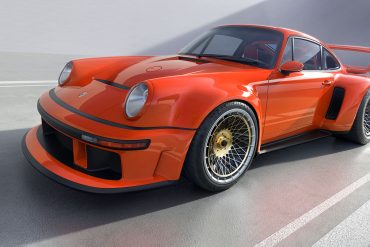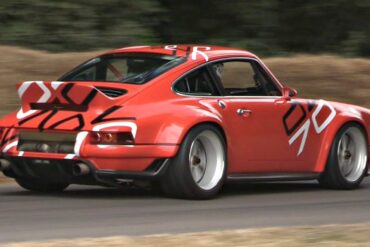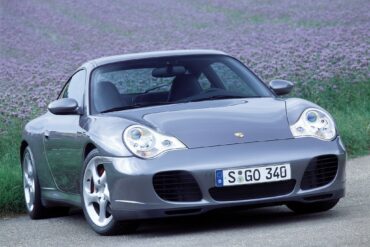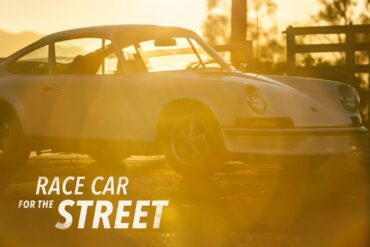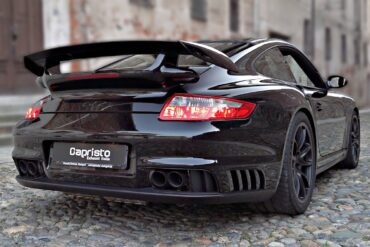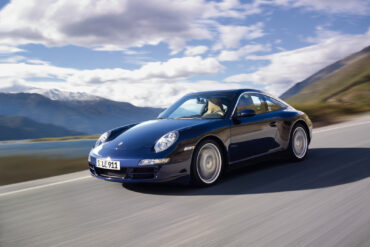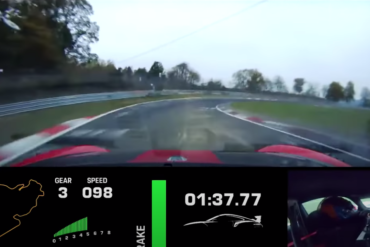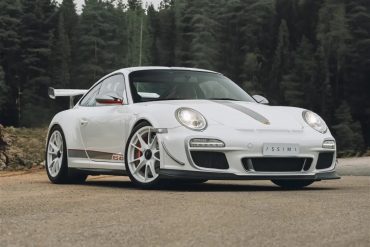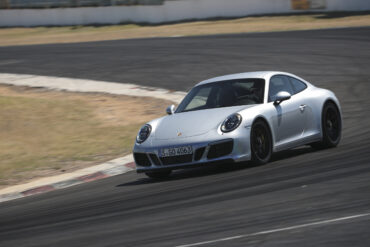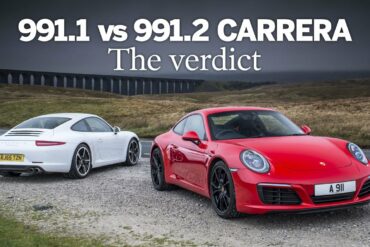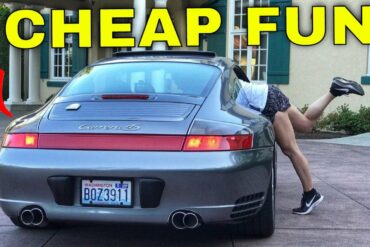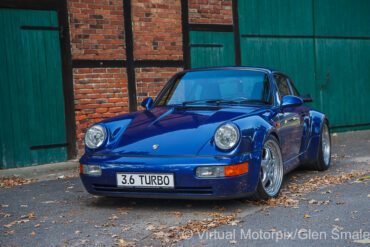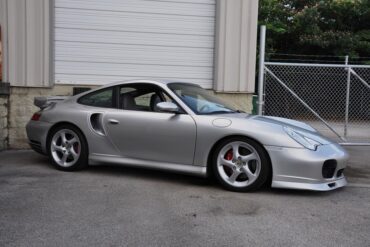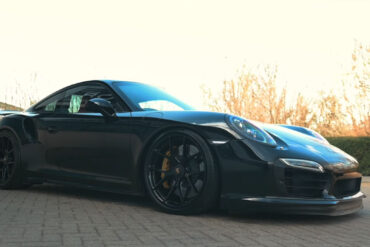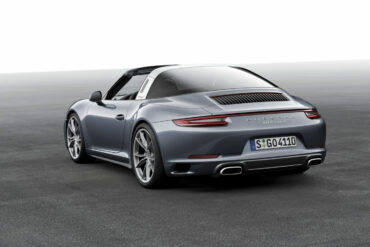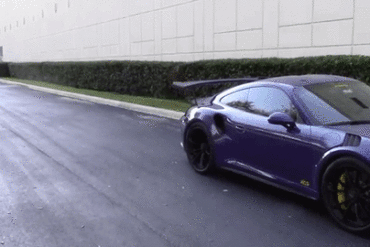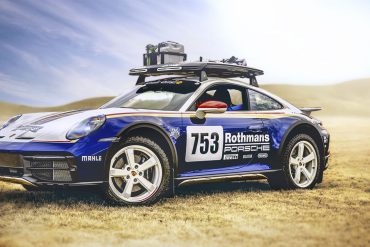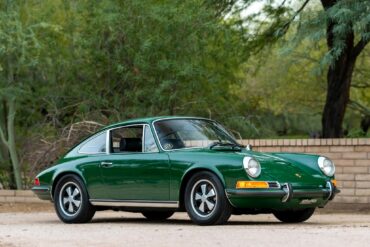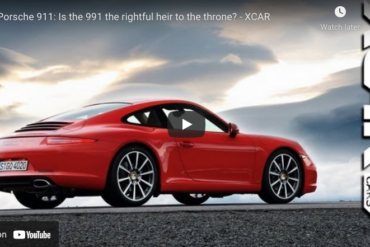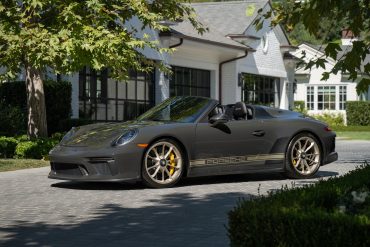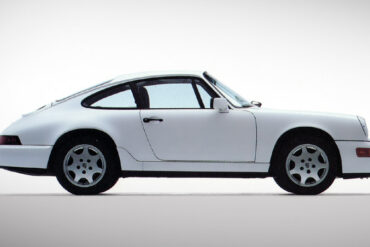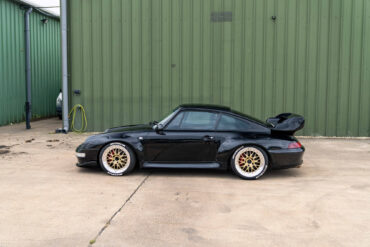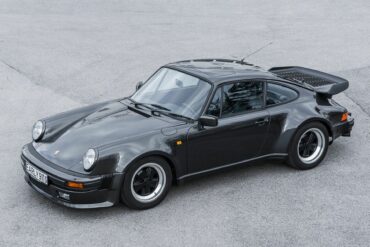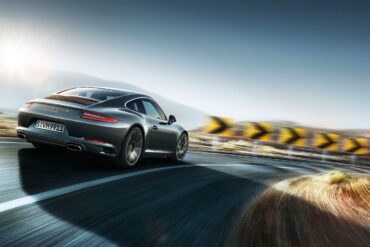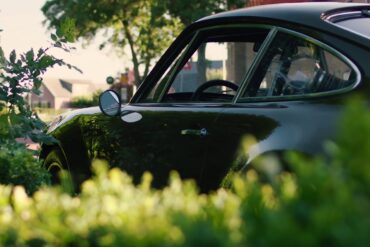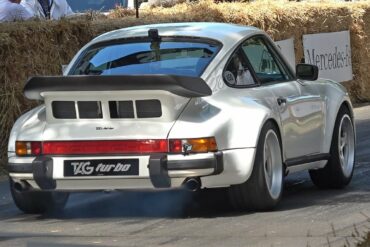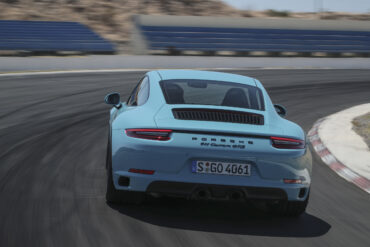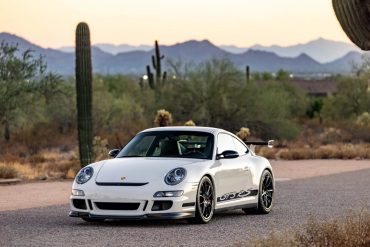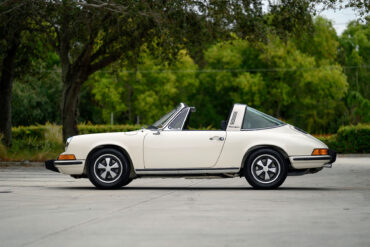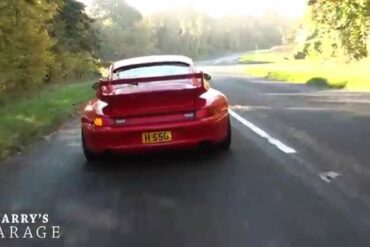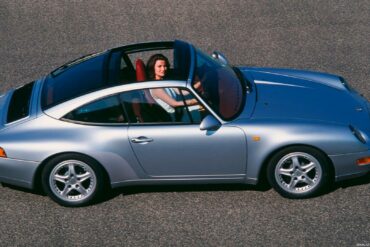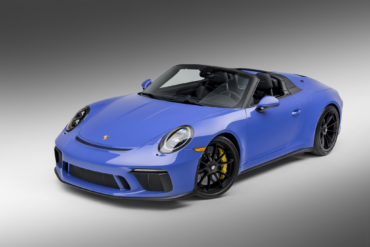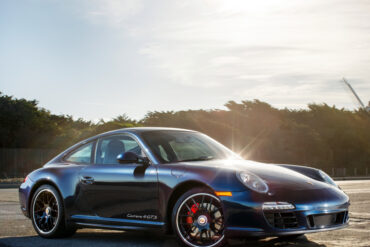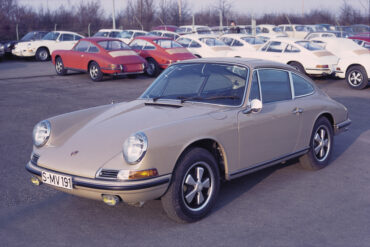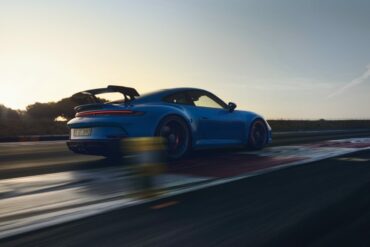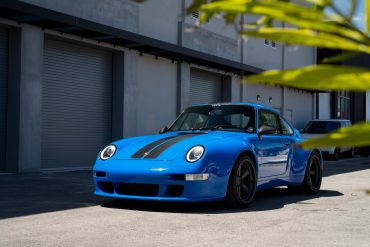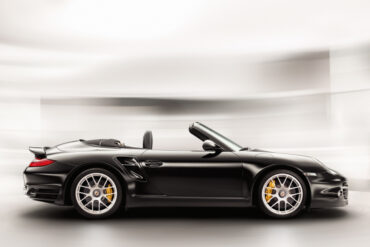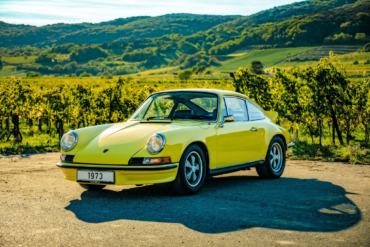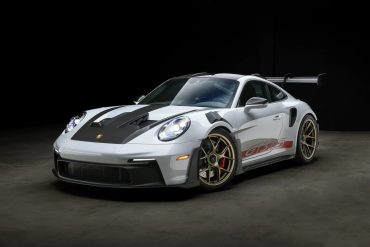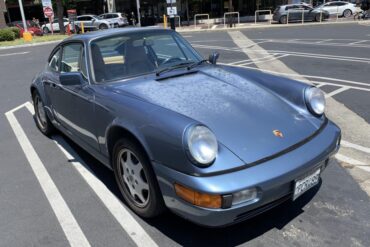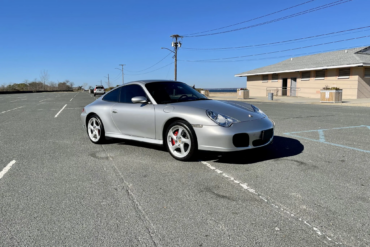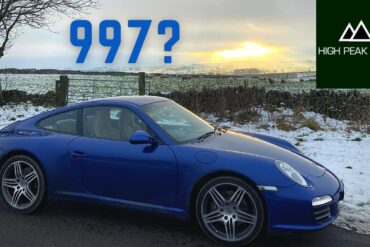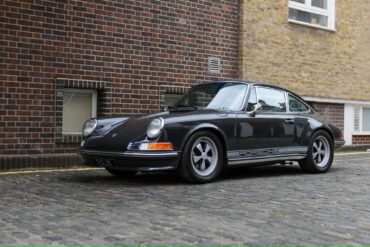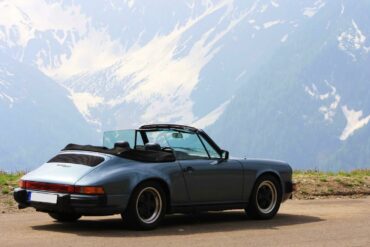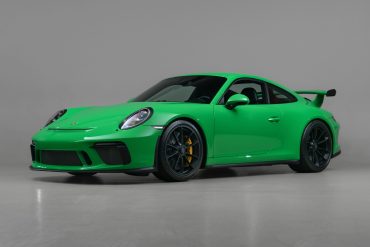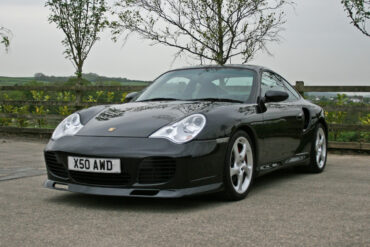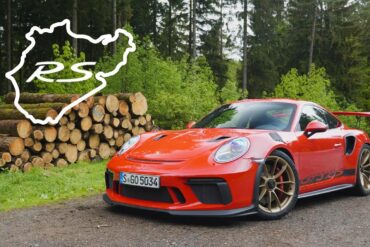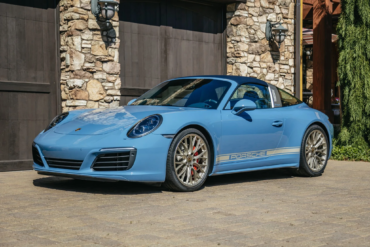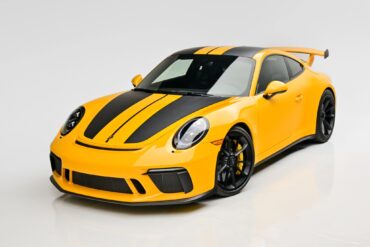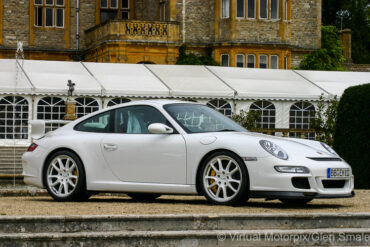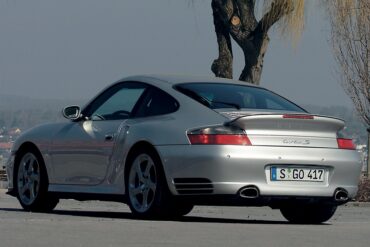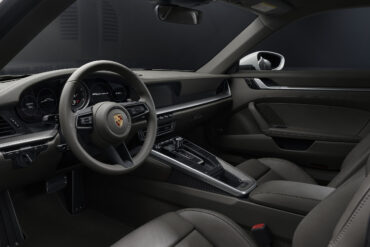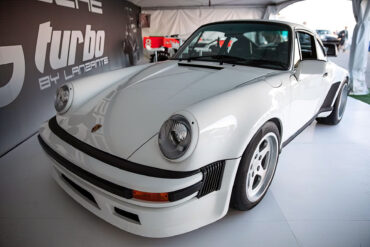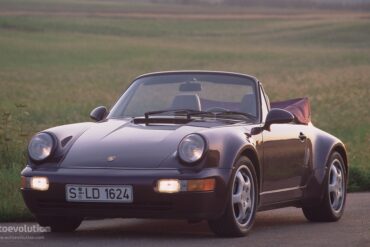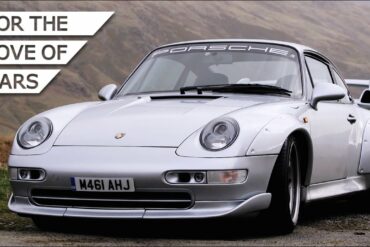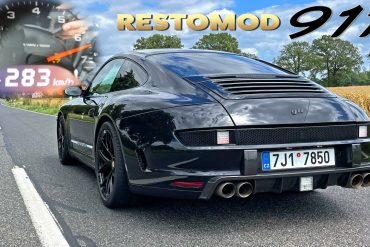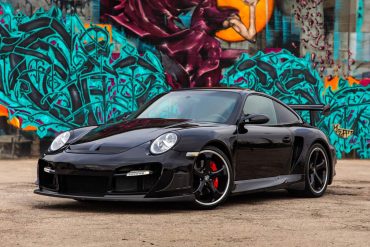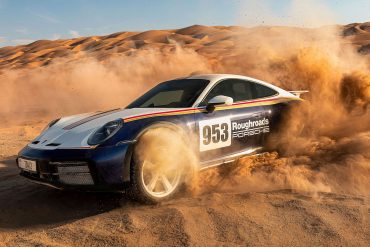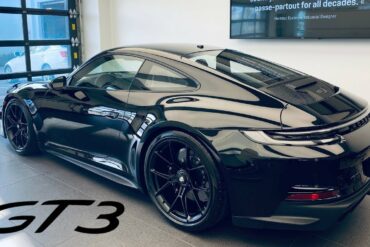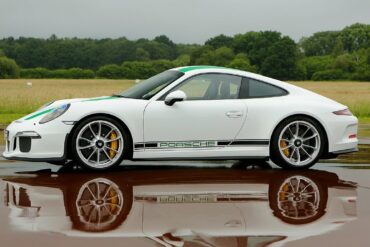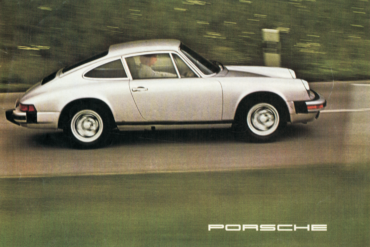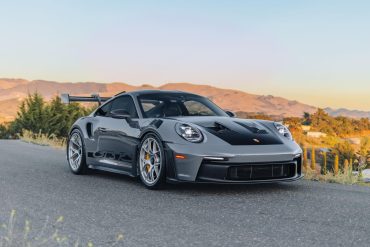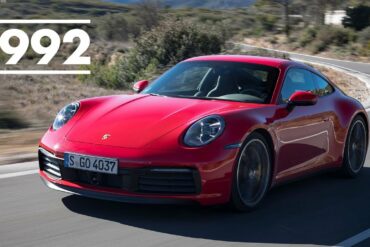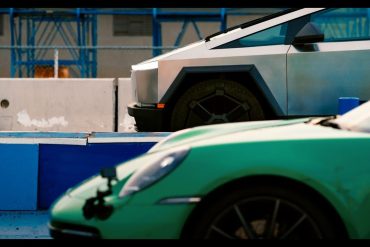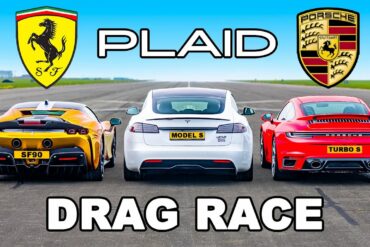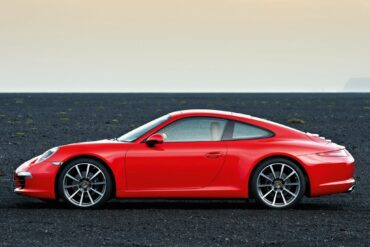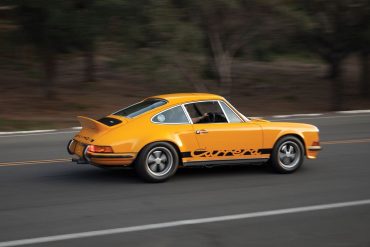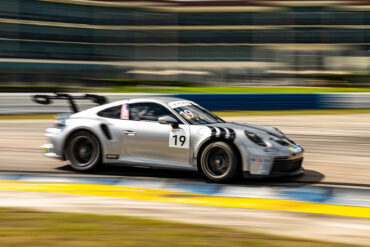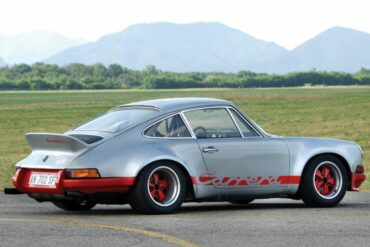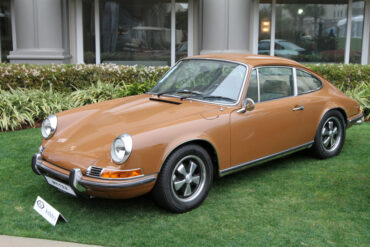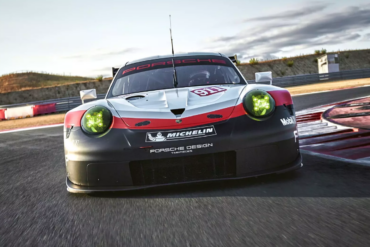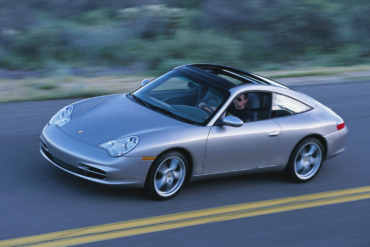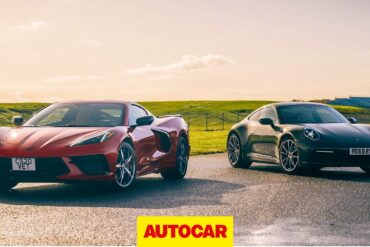The Story Behind the 2.7 RS The 2.7 RS was the first 911 to carry the Carrera badge, this is...
Porsche 911
All
- Porsche 912
- 911 Carrera RS 2.7
- Porsche 901 (911)
- Porsche 911 (F-Series)
- Porsche 911 (991)
- Porsche 911 (G-Series)
- Porsche 911 (964)
- Porsche 911 (993)
- Porsche 911 (996)
- Porsche 911 (997)
- 911 Speedster Concept
- Porsche 911 (992)
- 964 Carrera 2
- 964 Carrera 4
- ’30 Jahre’ Anniversary
- 964 Speedster
- 964 Turbo
- 964 Carrera RS
- 964 Carrera Cup
- 964 RSR
- 993 Carrera
- 993 Carrera 4
- 911 Edition 50
- 993 Carrera 4S
- 911 2.0 Bertone Roadster
- 993 Carrera S
- 993 Targa
- 992 Sport Classic
- 993 Turbo
- 996 Carrera
- 993 Carrera RS
- 992 America Edition 911
- 996 Carrera 4
- 993 GT2
- 996 Targa
- 993 Carrera Cup
- 996 Carrera 4S
- 996 Turbo
- 996 Turbo S
- 996 GT3
- 996 GT3 RS
- 996 GT2
- 996 GT3 Cup
- 996 GT3 R
- 996 GT3 RSR
- 997 Carrera
- 996 GT3 RS Race
- 997 Carrera S
- 997 Carrera 4
- 997 Carrera 4S
- 997 Targa
- 911 Carrera 3.0 Coupe (G-Series)
- 997 Targa 4S
- 997 Turbo
- 997 Turbo S
- 997 GT2
- 992 Carrera T
- 997 GT2 RS
- 997 Speedster
- 997 Carrera GTS
- 992 Dakar
- 997 Carrera 4 GTS
- 997 GT3 Cup
- 997 GT3 R
- 997 GT3 RSR
- 997 GT3
- 997 GT3 RS
- 997 GT3 R Hybrid
- 991 Carrera
- 991 Carrera 4
- 991 Carrera S
- 991 Carrera 4S
- 991 Targa 4
- 991 Targa 4S
- 991 Turbo
- 991 Turbo S
- 991 Carrera GTS
- 991 Carrera 4 GTS
- 991 Targa 4 GTS
- 991 911 R
- Porsche 992 GT2 RS
- 991 GT3
- 991 GT3 RS
- 991 GT2 RS
- 991 Speedster
- 991 GT3 R
- 991 GT3 Cup
- 991 RSR
- 991 Carrera T
- 992 Carrera 2
- 992 Carrera 4
- 992 Carrera S
- 992 Carrera 4S
- 992 Targa 4
- 992 RSR
- 992 Targa 4S
- 992 Carrera GTS
- 992 Carrera 4 GTS
- 992 Targa 4 GTS
- 992 Turbo
- 992 GT3 R
- 992 Turbo S
- 992 GT3
- 992 GT3 Touring
- 992 911 S/T
- 911 (G-Series)
- 992 GT3 RS
- 992 GT2 RS
- 992 GT3 Cup
- 911 Carrera 3.0 (G-Series)
- 911 S (G-Series)
- 911 Carrera RSR 2.8
- 911 SC (G-Series)
- Porsche 992 GT3 R Rennsport
- 911 S/T
- 911 Carrera 3.2 (G-Series)
- 911 (Base Model)
- 911 Turbo (930)
- 911 SC Safari
- 911 L
- 911 Carrera RSR Turbo 2.1
- 911 T
- 911 Carrera RSR 3.0
- 911 E
- 911 S
- 911 SC San Remo
- 911 Carrera 3.2 Clubsport
- 911 R
- Porsche 953
- 911 Carrera RS 3.0
- 911 T/R
- 911 Carrera 25th Anniversary
- 911 SC RS
- 911 Turbo LE
- 911 Carrera Commemorative
- 911 Carrera 2.7 (G-Series)
- 911 3.2 Speedster
- 911 Turbo 2.7
- 964 Turbo S
Porsche’s 911 GT2 RS is a brute, a lightweight, twin-turbocharged, 620-hp bout of madness that stemmed from Stuttgart’s quest to...
Priced at $222,000, the Porsche 911 Dakar offers a rally-inspired setup that enhances traction on gravel and dirt, providing many...
MotoManTV Review of the 991.2 Turbo After fitting all base 991s with turbos, Porsche has gone through and updated the...
The Targa 4’s main feature is its unique sunroof panel that allows you to enjoy this Porsche almost all year...
Singer Vehicle Design – Southampton Commission Today, we take a closer look at the Singer Vehicle Designs Southampton Commission. The...
Technical Brain Damage – Porsche 911 Carrera S We review the 2021 Porsche 911 Carrera S 992. The latest 911...
Porsche 991.2 Turbo S Review The Porsche 991.2 Turbo S may be the world’s most well rounded car. It squeezes...
Collecting Cars is currently offering a 1978 Porsche 911 SC ‘Safari’ by Tuthill Porsche. It is a great custom competition...
1967 – 1968 Porsche 911 S Coupe 2.0 (SWB) Technical Specifications Engine Type Flat 6 Induction Normally-aspirated Cooling Air/oil-cooled Valvetrain...
1983 Porsche 911 SC Cabriolet Technical Specifications Type Series Production Car Production Years 1978 – 1983 Built At Stuttgart, Germany...
Porsche made sports car history by launching its first publicly available rally car, the $223,450 911 Dakar. After extensive testing,...
The letter “R” might seem ordinary, but in the Porsche world, it signifies something much more. It’s a badge of...
Background In the Porsche world, “Luftgekühlt” represents all the air-cooled cars in the manufacturer’s history, from the Pre-A 356 through...
Few names evoke as much reverence as Porsche’s iconic 911 series. Known for its precision engineering, exhilarating performance, and timeless...
In the realm of high-performance sports cars, few names command as much respect as Porsche. Recently, enthusiasts have been captivated...
Whether in Portugal, Brazil, China or Switzerland: the world of Porsche has been celebrating 75 Years of Porsche Sports Cars...
Drag Race, Road & Track Review The 2021 Porsche 911 Turbo S ($262,350 CAD, $233,830 USD as specced) and the...
2016 Porsche 911 Carrera GTS Cabriolet (991) Technical Specifications Engine layout Rear Engine Engine type Boxer-6 Cylinders 6 Valves per...
Porsche has unveiled the 911 Carrera GTS Le Mans Centenaire Edition, a special version of the iconic 911 . This...
DLS Turbo restoration services are imagined with each owner to celebrate the victorious 934/5 endurance racers of the 1970s. In...
During the Goodwood Festival of Speed 2018 I filmed the amazing Singer DLS, based on the Porsche 911 964. Singer...
In 2002, the entire generation of the 996 was facelifted. The Carrera 4S Cabriolet was introduced in the lineup with the new engine and the Turbo bodywork. Many publications called the Carrera 4S the sweet spot in the 911 lineup when it was introduced, providing more performance than the base car without the exorbitant pricing of a Turbo or GT2. The Carrera 4S paired the aggressive bodywork and suspension of the Turbo with the base Carrera 4 drivetrain, though it didn't get the Turbo's huge rear wing. It’s easily identified by “Carrera 4S” badging and a large reflective strip on the rear end, spanning the gap between the taillights.
Porsche unveils a high-performance hybrid version of their iconic 911. This new GTS T-Hybrid prioritizes power over electric-only driving unlike...
The Ultimate 911 In the early 1970s, Porsche found itself in need of a street car that would allow the...
Old School Twin Turbo Flat-Six Noises! In today’s video I’ll take you onboard a gorgeous 2009 Porsche 911 997 GT2...
The two 997 Targa 4 cars are both offered in only all-wheel-drive. Available with either a 3.6 litre flat 6 in the Targa 4, or with a more powerful 3.8 litre flat 6 in the Targa 4S, the new car offers almost all the fun of a convertible without sacrificing the dynamic abilities of a hardtop. The Targa 4S gets to 60 mph in 4.7 seconds and tops out at 179 mph thanks to its 3.8 liter flat six pumping out 350 bhp and 295 ft lbs of torque. It has softer spring rates than the coupe, a more generous helping of leather in the cabin, a better tally of standard equipment, more storage space behind the front seats.
Porsche 911 GT2 RS Nurburgring Video Porsche set a new record for road-approved sports cars on the 20.6-kilometre Nürburgring Nordschleife...
The 997-generation 911 GT3 RS 4.0 from Porsche represents the outcome of extensive testing on both open roads and in...
2017 Porsche 911 Carrera GTS (991.2) Technical Specifications Engine Engine layout Rear Engine Engine type Boxer, twin-turbo Cylinders 6 Valves per...
Does the turbocharged 911 move the game on enough? After a mammoth road test in issue 137, Total 911 decide...
Cheap Dream Daily Driver – The 996 Porsche 911 C4S All-wheel drive, all weather, all season, you buy a Subaru right?...
Engine based on modified 3.6 litre 964 unit. Speedline wheels with big red brake calipers. Lessons learned in the Carrera Cup series proved the reliability of the new 3.6-litre engine. An additional three millimetres on the bore and two millimetres on the stroke, resulted in an increase in capacity of 300 cc. Combined with the turbo optimised cylinders, pistons and crank train, and an increase in the compression ratio from 7.0 to 7.5:1, this helped to boost power to 360 bhp. Torque was increased significantly to 520 Nm at 4200 rpm, up from 450 Nm at 4500 rpm in the earlier car.
2003 Porsche 911 Turbo X50 (996) Technical Specifications Price $ $133,000 Engine Aluminum Alloy, Twin Turbo Flat-6 Position Rear Longitudinal...
The Porsche 911 Turbo S isn’t a slow car by any means, with 552 hp and a very nice 700...
Known as the ‘Fiona Commission’ by Singer, this car is equipped with a 4.0-liter flat six-cylinder engine paired to a...
2019 Porsche 911 Targa 4 (991.2) Technical Specifications Engine Engine layout Rear Engine Engine type Boxer, twin-turbo Cylinders 6 Valves per...
In case you’re wondering how the GT3 RS came to be known as the “ultimate Porsche 911”, then you should...
Mad Max meets Burning Man A little over two decades ago, a bunch of off-roading enthusiasts decided to create the...
Head to Head Mercedes-AMG GT C vs Porsche 911 Carrera T For the road, the GT C is the best...
1970 – 1971 Porsche 911 E 2.2 Coupe (LWB) Pictures & Gallery ...
Carfection Reviews the New 991.2 Carrera S A new 911 is always something to pay special attention to. It’s the...
The 2019 Porsche 911 Speedster inherits the latest enhancements from Stuttgart while paying homage to the original Speedster model, the...
1991 Porsche 911 Carrera 4 Lightweight (964) Technical Specifications Engine Type Flat 6 Induction Naturally Aspirated Cooling Air/oil-cooled Valvetrain Single...
Our Favorite Cars In A Mega Drag Race The Ferrari’s the most powerful car in this line-up, with a 3.9-litre...
Collecting Cars is currently offering an impressive 24-car collection of rare exotics by a single owner which houses several Porsches....
Porsche Option Codes – Porsche 911 (1985 Model Year) Looking to decode your 1985 Porsche 911 option codes? Want to...
2016 – 2019 Porsche 911 Carrera (991.2) Pictures & Gallery...
One Man’s Perfect 911 Short movie about my Porsche 1969 912 that was turned into my dream hot rod 911...
1.5-litre V6 Turbo Sound! I can’t hide the fact that this special Porsche 930 Turbo is one of my favorite...
2018 Porsche 911 Carrera GTS (991.2) Technical Specifications Engine Engine layout Rear Engine Engine type Boxer, twin-turbo Cylinders 6 Valves per...
The 996-generation GT3 RS wasn’t available in the U.S., but that changed with the 997-generation. The standard 997 GT3 made...
Porsche’s 911 Starting in 1964 with the original 911, Porsche has produced a line of six-cylinder rear-engine sportscars that could...
Harry’s Garage Reviews A Porsche 911 993 ‘GT2’ Evo Starting life in 1995 as a regular 993 turbo, this car...
1996 Porsche 911 Targa (993) Technical Specifications Engine Type Flat 6 Induction Naturally Aspirated Cooling Air/oil-cooled Valvetrain Single overhead camshaft...
Live on Bring A Trailer is a Canadian-market example of a 2019 Porsche 911 Speedster that shows only 352 miles...
2011 Porsche 911 Carrera 4 GTS Coupe (997) Technical Specifications Engine Type Flat 6 Induction Normally-aspirated Cooling Water-cooled Valvetrain Double overhead...
In 1967 the A-Series Porsche production line was divided into the entry-level 911T, the standard 911 L for Lux and the sporting 911S. The 911L was effectively the 911 2.0 from previous years with only very minor updates such as new door handles, a brushed aluminum dashboard, a black steering wheel and other very minor details. In Europe, where it was considered the midrange model it featured engine Type 901/06 (Type 901/07 with Sportomatic) rated at 130 hp. In North America, the 911L was the highest level offering.
The announcement of a new 911 always gets us excited. The announcement of a new 911 GT3 is downright excitement-city...
While many have modified the 911 over time, Gunther Werks stands apart, envisioning a scenario where Porsche continued refining the...
2011 Porsche 911 Turbo S Cabriolet (997) Technical Specifications Engine Type Flat 6 Induction Twin-turbocharged Cooling Water-cooled Valvetrain Double overhead camshafts...
Revealed at the 1972 Paris Auto Show, the Carrera 2.7 RS was a special model used to homologate the 911...
One simple look at the all-new 2023 Porsche 911 GT3 RS, and it’ll tell you right away that this car is...
The Type 964 911 first launch with an all wheel drive model. It was a serious investment by Porsche in updating the chassis and tech platform. The 964 Carrera 4 was powered by the M64/01 3.6 liter flat six engine, developing 250 bhp and 229 ft/lbs of torque. The objective of the C4’s all-wheel-drive system was not only to provide improved traction but also better handling, especially in the wet and on slippery surfaces. The system sends power front/back in a 31:69 ratio because a 50:50 split would have made the 964 feel like a front-wheel-drive car.
In 2002, the entire generation of the 996 was facelifted. The Carrera 4S was introduced and got the new engine...
Should You Buy a Porsche 911 997...
Retro Works has restored a 1984 Porsche 911 by merging the design of a 1973 classic with a newer Carrera...
1983 Porsche 911 SC Cabriolet Pictures & Gallery ...
The 991.2 generation of Porsche’s 911 GT3 marked a significant improvement over its predecessor, incorporating several desirable changes. Responding to...
2005 Porsche 911 Turbo X50 (996) Technical Specifications Price $ $133,000 Engine Aluminum Alloy, Twin Turbo Flat-6 Position Rear Longitudinal...
Henry Catchpole drives the 991.2 Porsche 911 GT3 RS in search of the forgotten Sudschleife circuit....
This very rare 2017 Porsche 911 Targa 4S currently offered on Bring A Trailer is one of only 24 Exclusive...
Live on Bring A Trailer is an exquisite 2019 Porsche 911 GT3, boasting a mere 1,600 miles on its odometer....
2005 Porsche 911 Turbo S (996) Technical Specifications Engine Type Flat 6 Induction Twin-turbocharged Cooling Water-cooled Valvetrain Double overhead camshafts...
2022 Porsche 911 Carrera 4 Cabriolet (992) Technical Specifications Engine layout Rear Engine Engine type Boxer, twin-turbo Cylinders 6 Valves per...
The 7-figure 911 will solve all of life’s problems Many of us, including myself, continue to watch in disbelief as...
Porsche added the rear wheel drive Carrera 2 variant to the range in 1990. It was developed alongside the 964 Carrera 4, Porsche waited a year to release the Carrera 2 as a 1990 model year car. Like the Carrera 4, the Carrera 2 was available as a coupé, Targa or Cabriolet. Think of the cabriolet as a C2 coupe but with a fabric roof and more fun and you are right on the money. It was popular amongst buyers, particularly in the United States, with a total of 11,013 units sold, making it the third most popular 964 model.
Porsche 911 (993) GT2 Driven Charles Morgan takes us through one of his favourite cars – the 911 993 GT2....
Earlier this month, Edit Automotive has unveiled its vision of the Porsche 911 named the g11, an intricately crafted sports car predicated on...
This 2007 Porsche 911 Turbo has been modified with TechArt’s GTstreet R package, featuring an aerodynamic carbon fiber bodykit, 20″...
Behind the wheel of the 911 Dakar is a face familiar to the UAE’s diverse and fast-growing community of motorsports...
The incredible 2022 Porsche 911 GT3 Touring! Congratulations to the owner of this very special car! In this video the...
Porsche 911 R Reviewed Porsche 911 R – With one Top Gear test track and one rear-wheel-drive, naturally-aspirated, 493bhp manual...
On June 5, Sunday, a huge Porsche-themed event will be held on the grounds of the National Motor Museum, in...
Porsche 911 Sales Brochures (2nd Generation – G Series) Clearly going back this far, sales catalogs for Porsche cars are...
The 2023 Porsche 911 GT3 RS features a practical and aggressive exterior design adapted from the Le Mans class-winning 911...
Carfection Gives Us Their Initial Thoughts Henry Catchpole reviews the new Porsche 911 on both road and track in Spain....
Tesla launched the Cybertruck in a delivery event last week in Austin Texas, meaning we finally get to learn more...
Carwow has yet another interesting drag race for us. One that includes an electric car, a plug-in hybrid electric car,...
2012 Porsche 911 Carrera Coupe (991) Technical Specifications Engine Type Flat 6 Induction Normally-aspirated Cooling Water-cooled Valvetrain Four overhead camshafts, four...
Porsche 997 GT3 RS Review The Generation 2 version of the Porsche GT3 RS (997.2) is considered by many to...
Imagine, if you will, that you are in Paris, France, in October 1972. There is an automobile show, a fairly...
Early Beginnings It all began in 1990 with the vehicles built for the Porsche Carrera Cup Deutschland. Since then, the...
1973 Porsche 911 Carrera RSR 2.8 Technical Specifications Built At Stuttgart, Germany Price $ $22,500 Engine Flat 6 Valve Train...
1970 – 1971 Porsche 911 T 2.2 Coupe (LWB) Pictures & Gallery...
Porsche 911 RSR (991) (2017-2019) – Pictures & Gallery...
2002 Porsche 911 Targa (996) Technical Specifications Engine Type Flat 6 Induction Normally-aspirated Cooling Water-cooled Valvetrain Double overhead camshafts Injection...
Two of our favorites… Head to Head The 2021 Corvette Stingray has arrived in the UK. And it’s ace. It...


